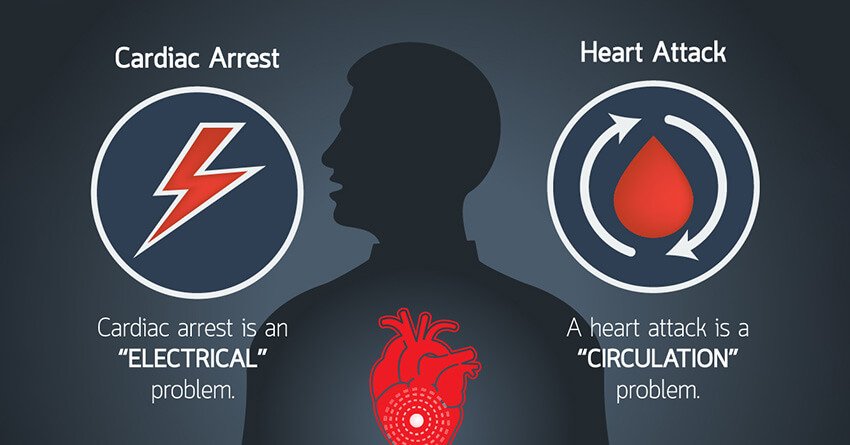It takes less than 10 minutes for a cardiac arrest to fully immobilize the person. The strokes begin unexpectedly and kill without any prior warnings. It is highly dangerous and takes place outside hospitals most of the time, about 90%. Close to 350,000 Americans are affected down by this problem annually.
However, hearts attacks are different from this. Electric disturbances are created, which lead to cardiac arrests. These are a form of severe medical emergencies which can turn deadly, if left untreated.
Some Symptoms felt during a cardiac arrest:
- Chest pains and light-headedness
- Fainting/dizziness
- Irregular heartbeats
- Signs of Flu
- Breathlessness/wheezing
The leading cause of cardiac arrests is the uneven heartbeats, also known as arrhythmia, which arises from the electrical connections with the heart’s tissues. During this fibrillation, the ventricles start to rapidly move around in an erratic manner which ultimately causes the ventricles to just aimlessly vibrate instead of regularly pumping blood.
The heart also has a set of specialized cells known as the sinus nodes. This also contains an electrical stimulator. Uneven electrical impulses can lead to cases of arrhythmia too. Usually in times of cardiac arrest, the person stops doing all actions and becomes still. The brain can get damaged on the spot, and death may occur without any notice.
Factors of risk are multiple, like: obesity, diabetes, a history of heart-related diseases in the family, excess cholesterol, too much of alcohol, heavy-smoking, a lifestyle of inactivity, a previous cardiac arrest, ageing, or intake of drugs like meth and coke. Males are particularly susceptible to heart attacks.
This usually happens in people who had a heart condition before. There are other heart diseases just as fatal like the coronary heart disease, where the arteries get clogged due to excess deposits of the cholesterol. Cardiomyopathy or Enlarged Heart is a condition in which the walls of the heart may thicken or get thinned- it is a defect some individuals have in their genes.
Recovery tips for those people gone through mild heart attacks before:
- Consumption of those food items that are good for your heart.
- Cut down smoking and drinking; instead go for jogs and runs daily. Also, regular medical check-ups.
- Consumption of healthy vitamins.
- Managing the blood pressure level and keeping the cholesterol levels in check.
A List of Healthy food for the Heart:
- Garlic helps in keeping the blood pressure and the cholesterol levels manageable and healthy.
- Fruits like blueberries, strawberries, and blackberries also help us in promoting good health.
- Avocados are filled with monosaturated fats which are extremely beneficial for the heart. The consumption of green tea has also been acclaimed to serve the same purposes.
- Green and leafy Veggies like kale and spinach are high on the nutrients. There are tomatoes, as well, which contains lycopene, thereby lowering the tendency of getting a stroke.
- Resistant starch present in beans ultimately and decrease cholesterol, triglycerides and blood pressure. It also fights inflammation. Walnuts manage blood pressure too.
- Olive oil has the capacity to decrease blood pressure level, and edamame can significantly boost the wellbeing of the heart. Dark chocolate has a similar effect.
- Whole grains like brown rice, whole wheat, rye, oats, buckwheat, barley and quinoa decrease “bad” LDL cholesterol and thereby, the chances of getting a stroke.
- Fatty fishes and fish oils are high in omega-3 fatty acids. Almonds are also filled with the nutrients required to keep good health.
- Flax seed and chia seeds can boost your heart healthy immensely.
Our heart is a vital organ, so do whatever you can to keep it healthy. Cheers.

